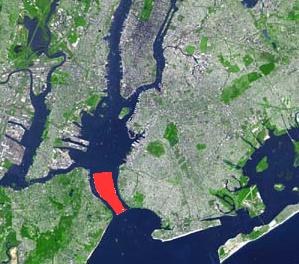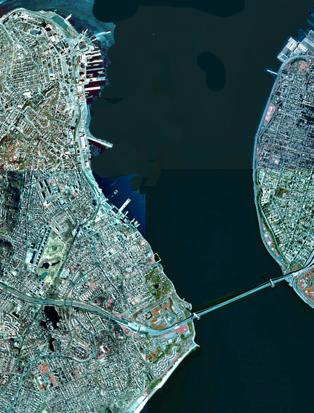The Narrows
|
|
The Narrows is the tidal strait separating Staten Island from the borough of Brooklyn on Long Island. It connects the upper and lower sections of New York Bay and forms the principal channel by which the Hudson River empties into the Atlantic Ocean. It has long been considered to be the maritime "gateway" to New York City and historically has been the most important entrance into the harbor.
The Narrows were most likely formed about 6,000 years ago at the end of the last ice age. Previously Staten Island and Long Island were connected and the Hudson River emptied into the ocean through the present course of the Raritan River. A build up of water in the Upper Bay allowed the river to break through to form the Narrows as it exists today (Waldman, 2000).
The first recorded European entrance into the Narrows was in 1524 by Giovanni da Verrazano, who set anchor in the strait and was greeted by a group of Lenape, who paddled out to meet him in the strait.
In August 1776, the British forces under William Howe on Staten Island undertook an amphibious operation across the Narrows and landed in Brooklyn, where they routed Washington's Army at the Battle of Long Island.
In 1964, the Narrows were spanned by the Verrazano Narrows Bridge, the longest suspension bridge in the world at the time. As a result, the strait itself has sometimes come to be known as the "Verrazano Narrows."
References
- John Waldman; Heartbeats in the Muck; ISBN 1-55821-720-7 The Lyons Press; (2000).


